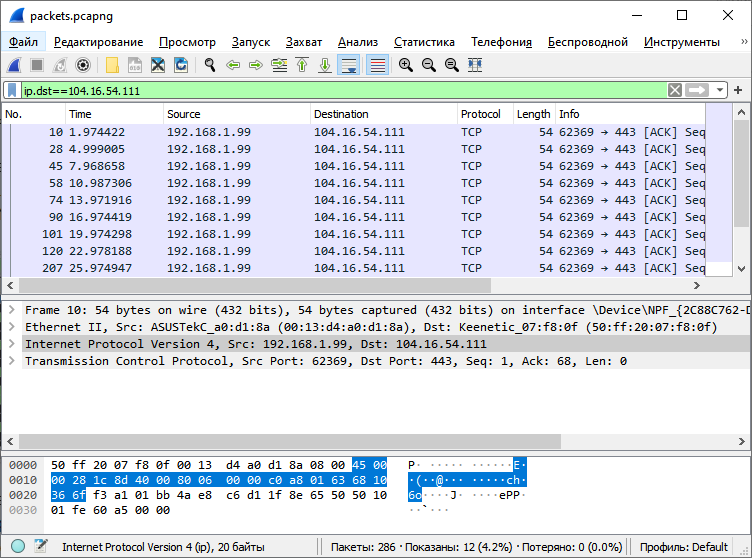

Only several properties are displayed but this can be modified to display additional properties such as the destination port number, which is useful for identifying the remote service that your host was connecting to.
#Wireshark filter by port 80 how to#
Each packet displayed has some properties such as the source and destination IP addresses and protocol. Wireshark Filter Port With Code Examples Hello everyone, in this post we will look at how to solve the Wireshark Filter Port problem in the programming. You can simply use that format with the ip.addr or ip.addr eq display filter. To view the Time column in a human-readable format, select View > Time Display Format > Date and Time of Day. This is where the subnet/mask option comes in. Customising the Displayīy default, Wireshark displays the time in seconds since the beginning of capture. When you start typing, Wireshark will help you autocomplete your filter. For example, type dns and you’ll see only DNS packets. The most basic way to apply a filter is by typing it into the filter box at the top of the window and clicking Apply (or pressing Enter). However, efforts to increase the security of the internet have pushed many websites to use HTTPS, which encrypts traffic using TLS and serves it over port 443. That’s where Wireshark’s filters come in. Lastly, the bottom part of the screen displays the Packet Bytes view, which contains the data portion of the selected packet where the hex representation of the packet data is on the left while on the right this is displayed in ASCII format. HTTP is a plaintext protocol that runs on port 80. Each section contains additional information which can be viewed by expanding the section. Below that is the Packet Details view which contains detailed information on each section of the packet. Next is the Packet List view which shows each packet that was sent and received during the capture. It’s advisable to specify source and destination for the IP and Port else you’ll end up with more results than you’re probably looking for. If we need to filter packets for the first connection above, we can use the following ways. Going downwards, there is a field for filtering and displaying specific packets based on certain conditions. This will search for all packets that contain both 10.43.54.65 and TCP port 25 in either the source or destination. This command will capture all of the packets that are traveling through interface eth0 (the first Ethernet interface) and that are for port 80 (the HTTP port). Le or = 10.10.50.1 and ip.The main toolbar at the top displays various buttons such as starting and stopping a capture, selecting another network interface to listen on, etc.


Protocol used in the Ethernet frame, IP packet, or TC segmentĮither all or one of the conditions should matchĮxclusive alterations – only one of the two conditions should match not bothįiltering Packets (Display Filters) Operator Source address, commonly an IPv4, IPv6 or Ethernet address Main Toolbar Items Default Columns In a Packet Capture Output Nameįrame number from the beginning of the packet capture.Keyboard Shortcuts – Main Display Window.Here 192.168.1.6 is trying to send DNS query. Default Columns In a Packet Capture Output TCP or UDP port is 80 (HTTP) tcp.port 80 udp.port 80 Filter S YN flag y n 1 and 0 HTTP http W ireshark Beacon Filter wlan.fc.t y pe subt y pe 0x 0 8 No ARP and no DNS not arp and (udp.port 53) W ireshark broadcast filter eth.ds t ff : ff : ff : ff : ff : ff Non-HTTP and non-SMTP to/from 192.0.2.1 ip.addr 192.0.2. Now we put tcp.port 80 as Wireshark filter and see only packets where port is 80.


 0 kommentar(er)
0 kommentar(er)
